Removal Procedure
Important: Observe and accurately reference mark the positions of all driveline components relative to the propeller shaft prior to disassembly. These components include the propeller shafts, drive axles, pinion flange, inner axle shafts, etc. Reassemble all components in the exact relationship the components had to one another prior to disassembly. Follow the specifications, torque values and any measurement made prior to disassembly in order to maintain the factory system balance of the driveline components. System balance provides a smoother running driveline operation.
- Unlock the steering column allowing the steering linkage to move freely.
- Raise the vehicle. Refer to Lifting and Jacking the Vehicle in General Information.
- Strap the frame to the hoist in order to prevent movement.
- Remove the tire and wheel assembly. Refer to Tire and Wheel Removal and Installation in Tires and Wheels.
- Insert a drift through the brake caliper and into a brake rotor vane to prevent the wheel drive shafts from turning.
- Remove the axle nut and the washer.
- Remove the drift from the brake rotor.
- Remove the brake hose bracket from the upper control arm.
- Remove the wheel sensor wire bracket from the upper control arm.
- Remove the brake caliper. Refer to Brake Caliper Replacement in Disc Brakes.
- Remove the brake rotor.
- Remove the shock absorber bottom mounting nut and the bolt.
- Position a safety stand under the lower control arm.
- Support the weight of the steering knuckle assembly and lower control arm with the safety stand.
- Disconnect the wheel drive shaft from the steering knuckle by placing a brass drift on the end of the shaft and striking the drift with a hammer.
- Disconnect the upper control arm ball joint from the steering knuckle. Refer to Upper Control Arm Ball Joint Replacement in Front Suspension.
- Disconnect the lower control arm ball joint from the steering knuckle. Refer to Lower Control Arm Ball Joint Replacement in Front Suspension.
- Remove the steering knuckle from the wheel drive shaft.
- Lower the safety stand with the lower control arm enough to allow clearance to remove the wheel drive shaft.
- In order to prevent damage to the drive axle CV joint boots, cover the following components with a shop towel:
- Disconnect the wheel drive shaft from the front differential carrier by placing a brass drift or block of wood on the tripot housing and striking the drift with a hammer. Strike hard enough to overcome the snap ring pressure holding the drive axle to the differential carrier.
- Remove the wheel drive shaft from the vehicle.
- Inspect the seal on the steering knuckle for damage. Check the seal for any cuts or tears. Lubricate the seal lip. If the seal is cut or torn, then check the wheel bearing for damage and replace the seal. Refer to Front Wheel Hub, Bearing, and Seal Replacement .
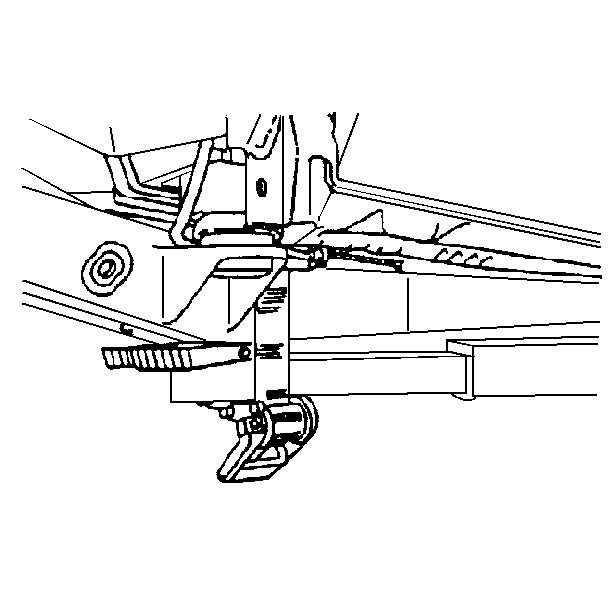
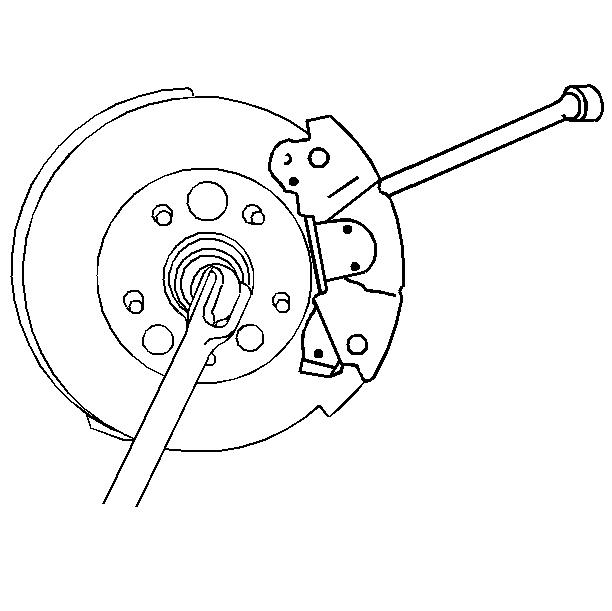
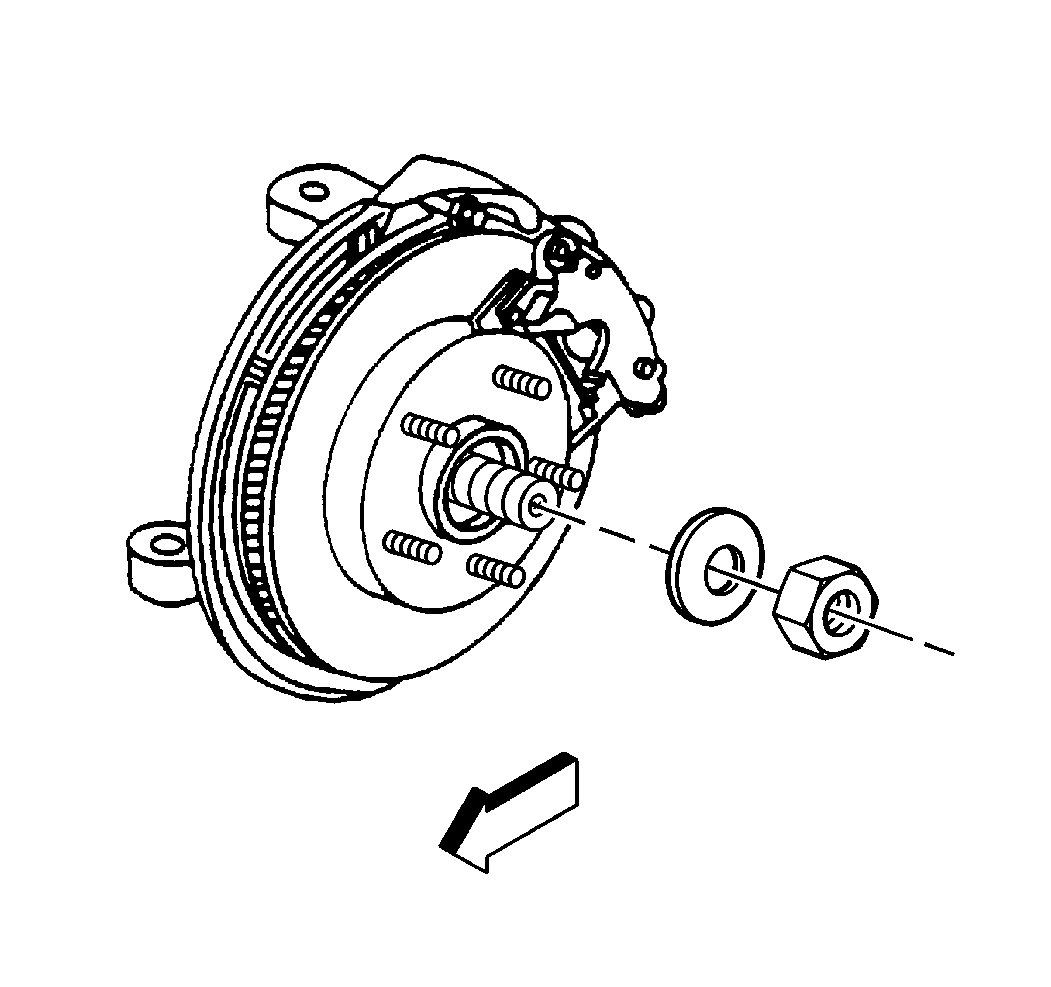
Discard the nut.
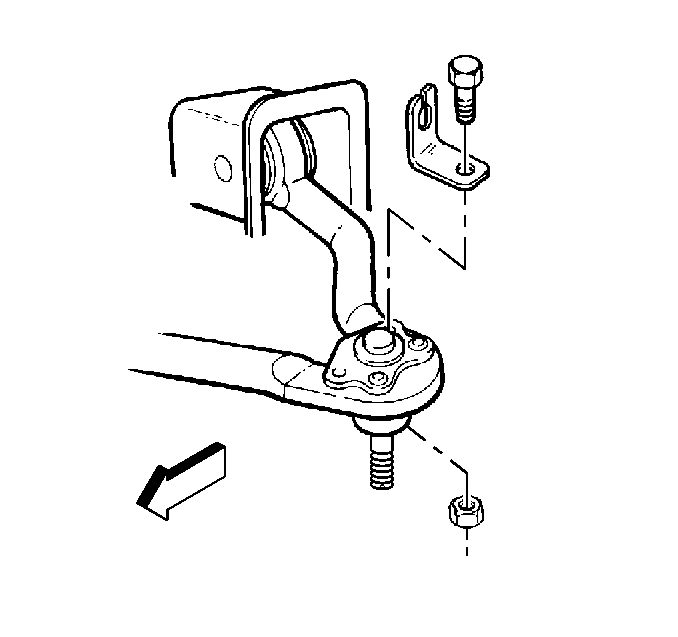

Support the caliper with a piece of wire in order to prevent damage to the brake hose.
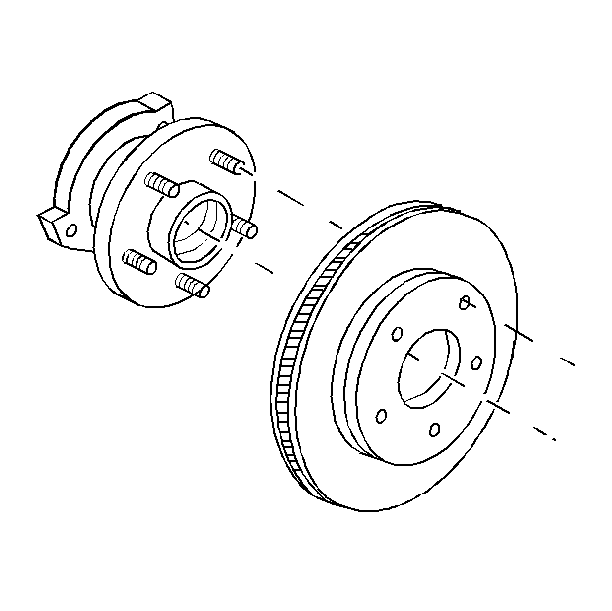
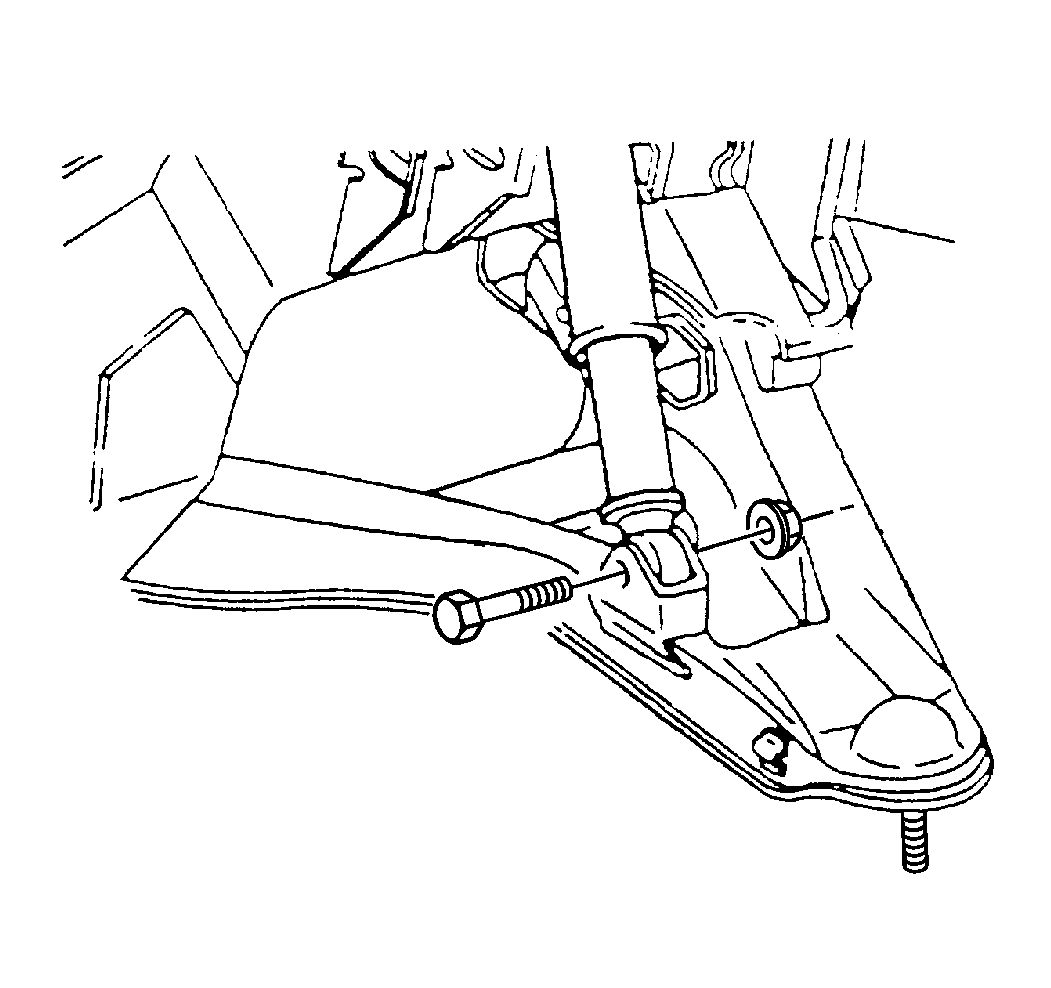
Compress the shock absorber.
Notice: Be careful that the safety stand does not damage or bend any components it may contact.

Do not attempt to remove the wheel drive shaft at this time.
After the lower control arm ball joint is loose from the knuckle, simultaneously push the wheel drive shaft toward the differential carrier in order to allow room to remove the steering knuckle.
Support the knuckle with a piece of wire from the upper control arm in order to prevent any strain on the outer tie rod and the wheel speed sensor wire.
Important: Do not damage the differential carrier axle seals during wheel drive shaft removal.
| • | The shock mounting bracket |
| • | The lower control arm ball stud |
| • | All other sharp edges |
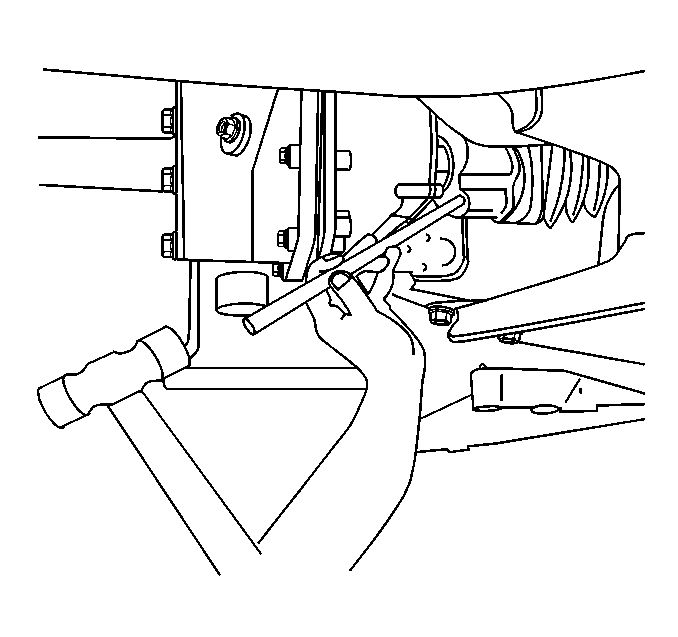
Caution: To prevent personal injury and/or component damage, do not allow the weight of the vehicle to load the front wheels, or attempt to operate the vehicle, when the wheel drive shaft(s) or wheel drive shaft nut(s) are removed. To do so may cause the inner bearing race to separate, resulting in damage to brake and suspension components and loss of vehicle control.
Installation Procedure
Important: Reassemble all components in the exact relationship the components had to one another prior to disassembly. Follow the specifications, torque values and any measurement made prior to disassembly in order to maintain the factory system balance of the driveline components. System balance provides a smoother running driveline operation.
- In order to prevent damage to the drive axle CV joint boots, cover the following components with a shop towel:
- Install the wheel drive shaft to the differential carrier by doing the following:
- Pull back on the tripot housing to ensure that the retaining ring is properly retaining the drive axle in the differential carrier. You should not be able to pull the wheel drive shaft out of the differential carrier when the retaining ring is properly seated.
- Remove shop towels covering the following components.
- Guide the drive axle into the steering knuckle.
- Raise the lower control arm with the safety stand to insert the lower control arm ball stud into the steering knuckle.
- Assemble the lower ball joint. Refer to Lower Control Arm Ball Joint Replacement in Front Suspension.
- Install the upper control arm ball joint to the steering knuckle. Refer to Upper Control Arm Ball Joint Replacement in Front Suspension.
- Install the shock absorber to the lower mount.
- Install the bolt and the nut.
- Install the brake rotor.
- Install the brake caliper. Refer to Brake Caliper Replacement in Disc Brakes.
- Install the wheel speed sensor bracket to the upper control arm.
- Install the brake hose bracket to the upper control arm.
- Insert a drift through the brake caliper and into a brake rotor vane to prevent the wheel drive shaft from turning.
- Install the wheel drive shaft washer and the new nut.
- Install the tire and the wheel. Refer to Tire and Wheel Removal and Installation in Tires and Wheels.
- Check the front axle fluid level and add if needed. Use the proper fluid. Refer to Sealers, Adhesives, and Lubricants .
- Remove the safety strap and the safety stand.
- Lower the vehicle.
Important: Do not lubricate or damage the differential carrier axle seals during installation.
| • | The shock mounting bracket |
| • | The lower control arm ball stud |
| • | All other sharp edges |
| 2.1. | Using both hands, align the splines on the shaft with the differential housing. |
| 2.2. | Center the wheel drive shaft into the differential carrier. |
| 2.3. | Firmly push the shaft straight into the differential carrier until the retaining rings sits in the differential carrier. |
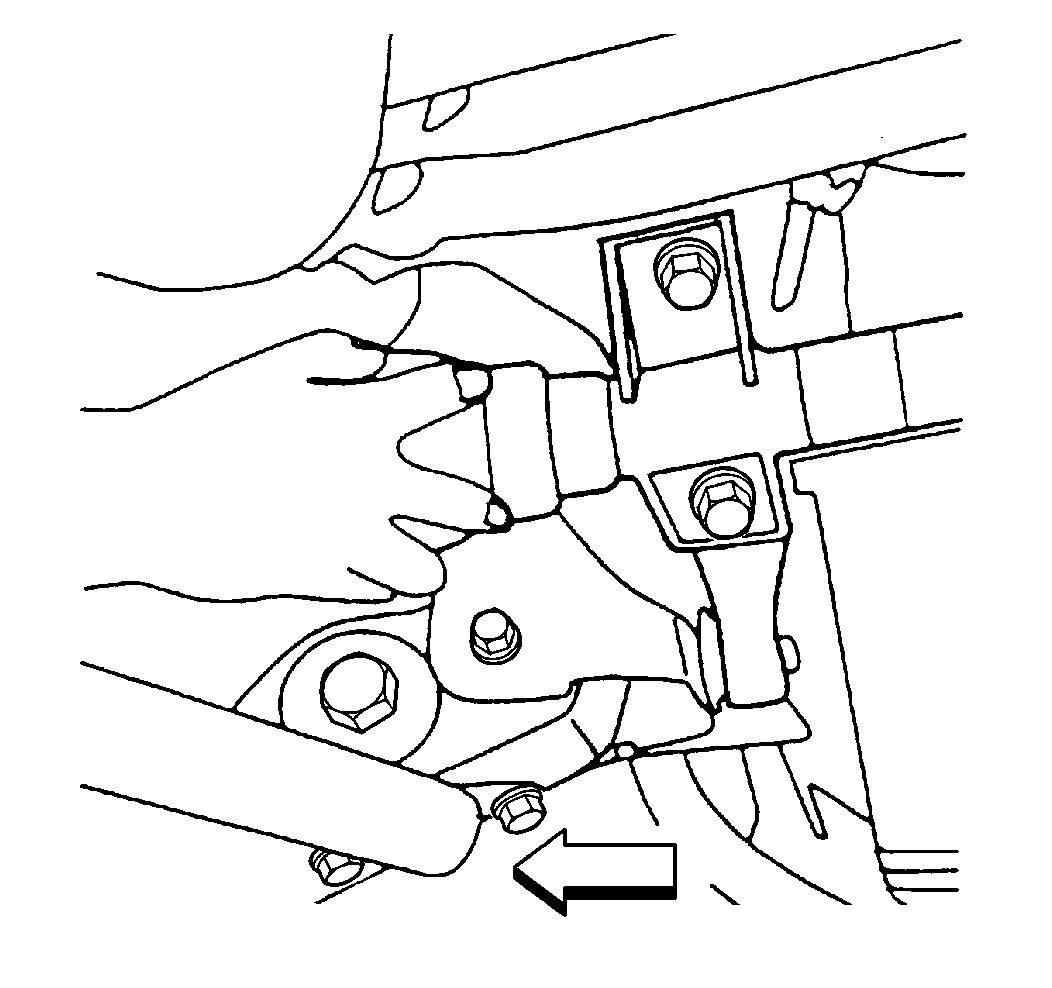
| • | The shock mounting bracket |
| • | The lower control arm ball stud |
| • | All other sharp edges |
Notice: Be careful that the safety stand does not damage or bend any components it may contact.
Notice: Refer to Fastener Notice in the Preface section.
Tighten
Tighten the bolt to 62 N·m (46 lb ft).


Tighten
Tighten the wheel speed sensor bracket nut to 16 N·m (12 lb ft).

Tighten
Tighten the brake hose bracket nut to 16 N·m (12 lb ft).


Tighten
Tighten the axle nut to 200 N·m (147 lb ft).
